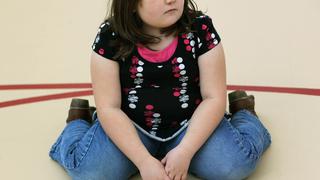
While the exact cause of precocious puberty is often unknown, some factors can trigger early sexual development. These include genetic factors, hormonal imbalances, and, in rare cases, diseases that affect the brain or glands responsible for hormone production. File photograph used for representational purposes only
Early puberty can be confusing, emotionally overwhelming and even frightening. Children may feel out of place amongst their peers, self-conscious about the changes in their bodies, or unsure of what is happening. Mood changes, embarrassment and anxiety are common as physical changes appear in the body before children are emotionally ready to understand it all.

Precocious puberty
Traditionally, precocious puberty has been defined as the appearance of secondary sexual characteristics, that is, breast development before the age of 8 years in girls and testicular enlargement before the age of 9 years in boys. The condition occurs more frequently in girls than boys and reports from different centres have shown that the incidence of precocious puberty has increased after the COVID-19 pandemic.
The timing of the onset of puberty may often be determined by genetic factors, but several other factors that affect the age of puberty, either by themselves or in unison, include hormonal, nutritional, skeletal maturation, environmental causes, stress and altered circadian cycles.
While the etiology of precocious puberty is often multifactorial, conditions that affect the hypothalamo-pituitary region, gonads and adrenals are causative of precocious puberty
Dietary intakes very high in animal protein, dairy products, and soy have been associated with earlier puberty. Several endocrine-disrupting chemicals (EDCs) in the environment can also have a significant influence on the normal course of puberty. Increased adiposity, especially peri-pubertal increment in fat mass in girls, is associated with earlier onset of puberty and menarche.

The symptoms
Children experiencing precocious puberty may show some of the following signs:
In girls – Breast development, acceleration in height, mood swings, pubic and axillary hair growth, and early onset of menstruation.
In boys – Testicular enlargement, rapid growth spurt, mood swings, increase in phallic length-girth, pubic, facial & axillary hair growth, and deepening of voice.
Treatment options
Therapy is individualised, based on the aetiology, or cause. In cases with an organic aetiology, the underlying cause may need to be addressed.
Treatment envisages the regulation of the process of puberty to a physiologically acceptable age to optimise stature, for its psychologic and plausible physiologic benefits, in addition to addressal of the underlying aetiology when organic.
Psychological support for both the child and their family is important to help cope with the emotional challenges that can arise from early puberty.

Seeking medical help
Parents and primary care providers must monitor the growth of their children and be vigilant for signs of early puberty. A specialist consultation must be sought in case of early appearance of pubertal signs. Timely evaluation and management of the condition can optimise stature, allay psychological challenges, and, in certain cases, offer physiologic benefits.
Parental support plays a crucial role in helping children navigate this undesirable early transition. Open conversations, age-appropriate explanations and reassurance about the physical and emotional changes they are undergoing can make the child feel seen and supported. Dismissing their concerns should be avoided and instead, a safe space should be created where they can express their feelings freely.
(Prof (Dr.) Abhishek Kulkarni is consultant, paediatric and adolescent endocrinology, Narayana Health SRCC Children’s Hospital, Mumbai. Info.Srcc@narayanahealth.org)
Published – September 01, 2025 02:15 pm IST











Leave a Reply